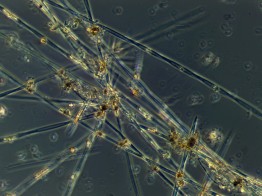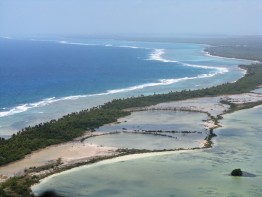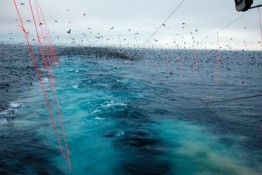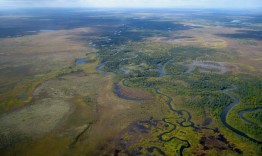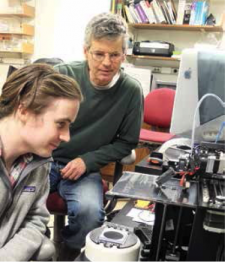The algal bloom that shut down several shellfish fisheries along the West Coast earlier this year has developed into the largest and most severe in a decade or more—stretching from at least central California to as far north as Alaska. UW research analyst Anthony Odell is part of a NOAA-led team of harmful algae experts who are surveying the extent of the patch and searching for the swirling eddies that can become toxic to marine mammals and humans.
Read more at UW Today »Group at UW shows how to account for nature’s benefits in decision-making
How can we assess the value of food, energy, clean water, and other resources we depend on? A group with field offices around the U.S., including at the University of Washington, is working to figure that out. The Natural Capital Project wants to integrate the socioeconomic, cultural, and spiritual values of nature into all major decisions affecting the environment and human well-being.
Read more at UW Today »Washington Sea Grant’s Ed Melvin wins presidential award for seabird-saving streamer lines
A Washington Sea Grant staff scientist is sharing top honors for developing gear that nearly eliminates seabird bycatch in long-line fisheries from the West Coast to South Africa. Twenty years of work on sea and land to save threatened seabirds from becoming fishing bycatch have won national recognition for senior fisheries scientist, Ed Melvin, also an affiliate associate professor in the UW School of Aquatic and Fishery Sciences.
Read more at UW Today »Chemical tags in ear bones track Alaska's Bristol Bay salmon
Scientists from Aquatic and Fishery Sciences and other institutions are learning a lot about where Chinook salmon swim in Alaska’s Bristol Bay region through chemical signatures recorded in their ear bones. Similar to a tree’s growth rings, this bone—called an otolith—accumulates layers as the fish grows. Acting as a little recorder, each layer of the otolith corresponds to the unique chemical signatures of the waters in which they swam.
Read more at UW Today »New knowledge and technology help scientists track harmful algae
Though the waters of Puget Sound are full of beneficial algae, which provide oxygen, food, and shelter for other creatures, it’s the nasty ones that usually make the news, when they "bloom" into toxic pools, harming fish and humans. Now, researchers working with Washington Sea Grant have started to narrow in on harmful algae’s behaviors, and are developing some slick techniques that they hope will lead to much more effective detection and monitoring.
Read more »
